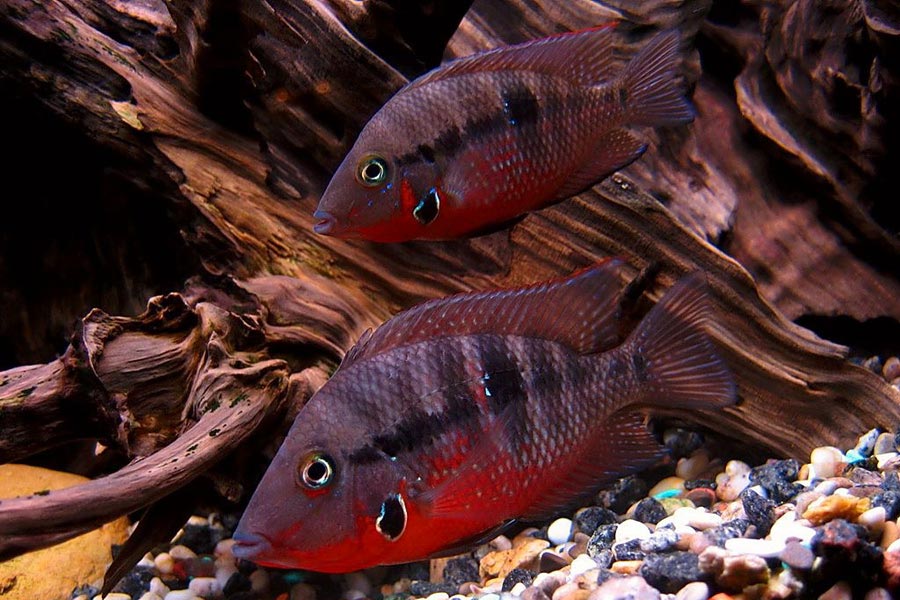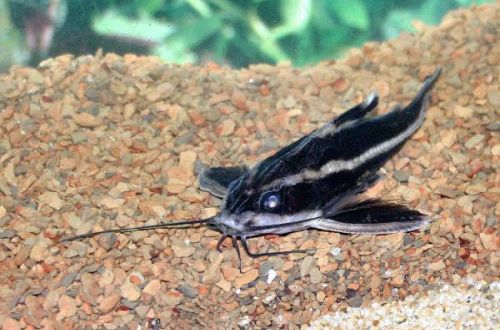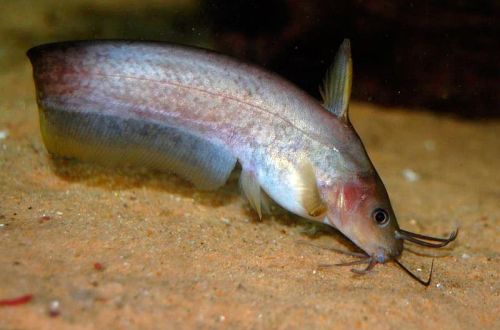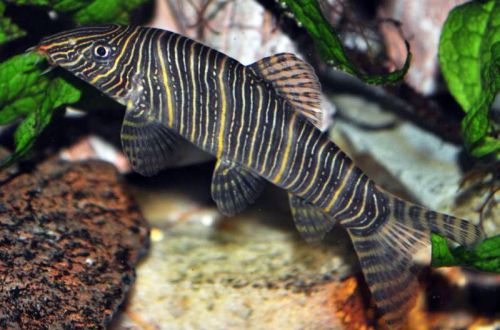
Cychlazoma Meeki
Meeki cichlazoma or Mask cichlazoma, scientific name Thorichthys meeki, belongs to the Cichlidae family. First of all, everything attracts with its original color, for which it is appreciated by lovers of American cichlids. It belongs to fairly friendly and unpretentious species, it can be kept both in a separate species aquarium, and in general in the company of other fish. It got its name in honor of the American ichthyologist, compiler of the first book on Mexican fish, Seth Eugene Meek.

Habitat
Distributed on the Yucatan Peninsula in what is now Mexico and Guatemala. It lives in flat rivers with a moderate course, prefers shallow water up to 1.5 meters deep. It successfully tolerates turbidity and brackish water, therefore it can swim into river deltas, small lagoons formed at the border of mixing fresh and salt water from the Atlantic.
Requirements and conditions:
- The volume of the aquarium – from 200 liters.
- Temperature – 20-26°C
- pH value is about 7.0
- Water hardness – soft (8-10dH)
- >Substrate type – sandy
- Lighting – moderate
- Brackish water – 1-2 teaspoons per 10 liters of water is acceptable
- Water movement – moderate
- Size – 10–12 cm.
Description

Tall slightly elongated body with a large head. The dorsal and anal fins of males are elongated and pointed. The coloration is blue-blue with several dark spots in the center and implicitly expressed transverse stripes. The lower part of the body is red.
Food
In nature, the Meeki cichlazoma feeds on various small crustaceans and plant debris, often sifting the soil with its mouth in search of food. At home, they accept any high-quality food from bags (granules, flakes), as well as daphnia, mosquito larvae, small earthworms, bloodworms, etc. Be sure to include herbal supplements in the diet or provide for their presence in dry food.
Maintenance and care
One pair of adult fish will require a tank of at least 200 liters. In the design, strong plants with a powerful root system are preferred. Covers are a must. In addition to decorative objects (castles, sunken ships, etc.), it is allowed to use ceramic flower pots, pieces of plastic pipes, etc. In some projects, they sometimes look more appropriate. Driftwood, tree branches, intertwined roots will complement the interior and become an excellent platform for the growth of algae – an important natural source of food. Substratum of coarse sand with several smooth boulders.
The water is preferably soft neutral, although the fish are able to adapt to a wide range of pH values. Refresh weekly by 15–20% of the water volume. Read more about water parameters and ways to change them in the Hydrochemical composition of water section. The set of equipment is standard and includes a filtration, lighting, heating and aeration system.
Behavior
They prefer to stay in a group, but paired content is also allowed. It is a monogamous territorial fish. Protects its space and offspring. During the mating season, it becomes pugnacious and attacks everyone, therefore, in a small aquarium, other fish of a similar size should be avoided. Generally compatible with many species provided they are large enough to be accidentally eaten.
Breeding / breeding
Successful breeding is possible with strict adherence to the correct diet, where, along with dry food, meat products must be present, as well as maintaining high water quality.
The male and female form a permanent pair, the eggs are laid on some flat surface, such as a stone or even the glass of an aquarium. The male moving along the masonry fertilizes the eggs. In total, several hundred eggs are laid. During the incubation period, the female remains near the clutch, protecting it from intruders, the male patrols the entire territory. After birth (usually 4-5 days), the fry begin to swim freely. Parents protect the offspring for a few more weeks, then it is advisable to plant the fry in a separate aquarium.
It is worth noting that young individuals sometimes eat their first brood.
Diseases
Quite a hardy species, health problems begin only with a significant deterioration in the conditions of detention, poor nutrition and contact with sick fish. Read more about symptoms and treatments in the Aquarium Fish Diseases section.
Features
- Show aggressiveness during spawning and caring for offspring
- Incompatible with small species





